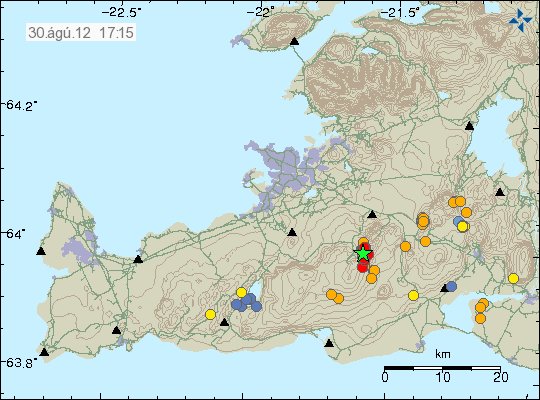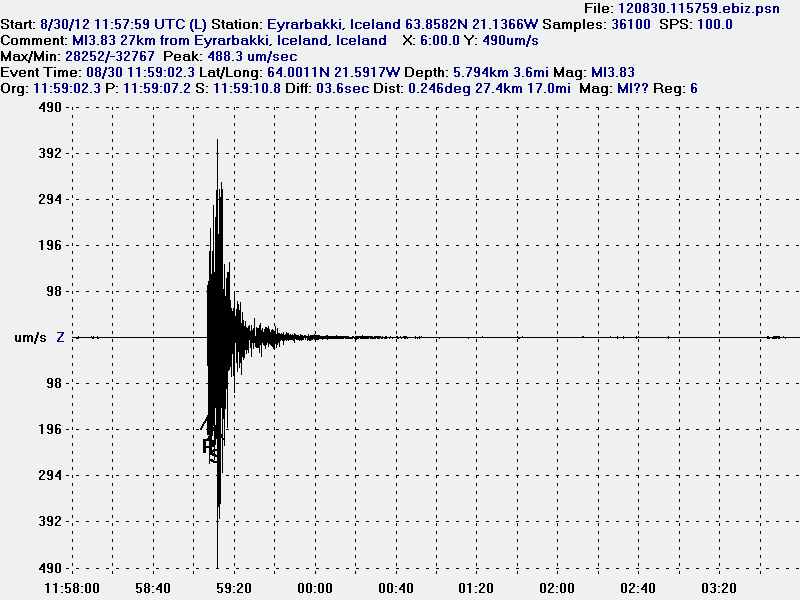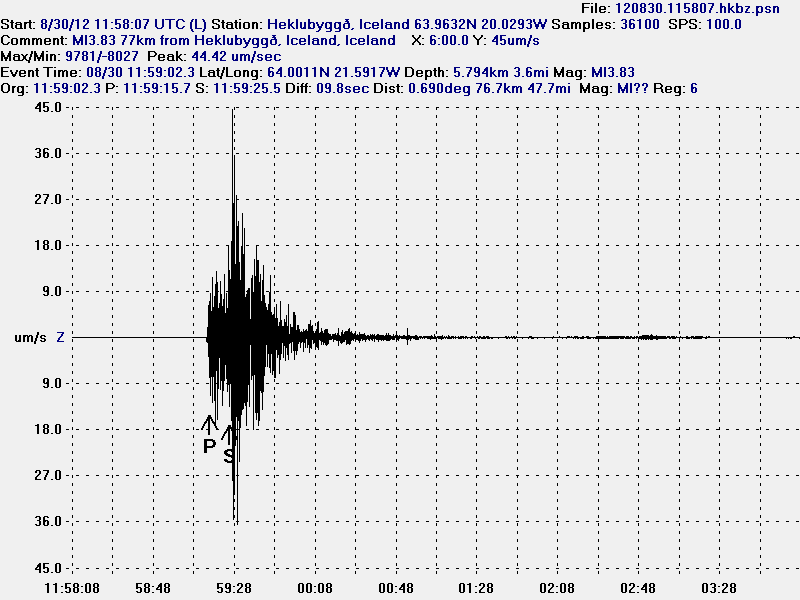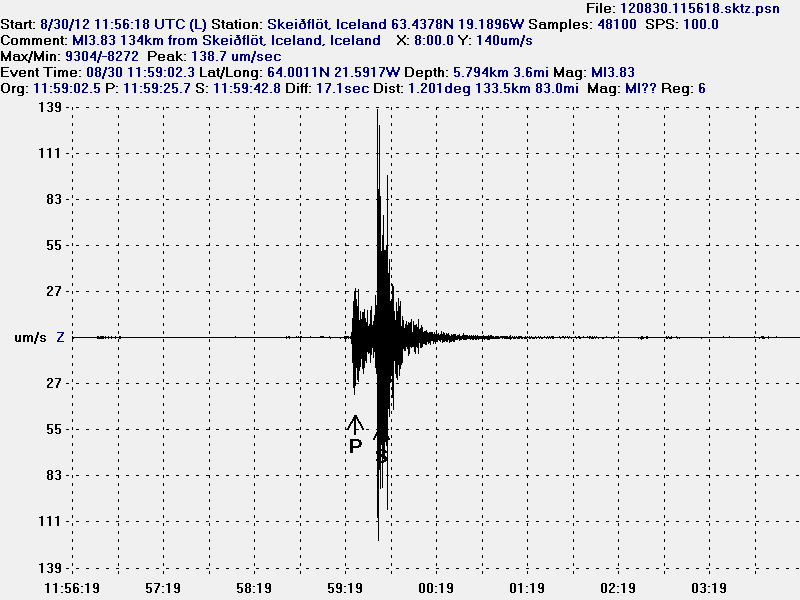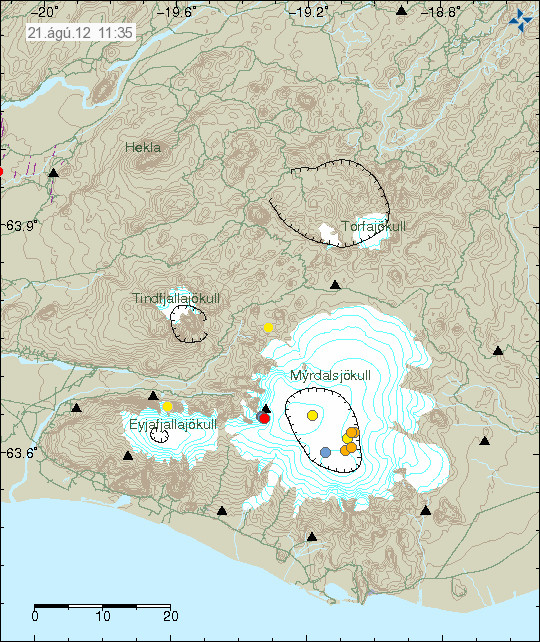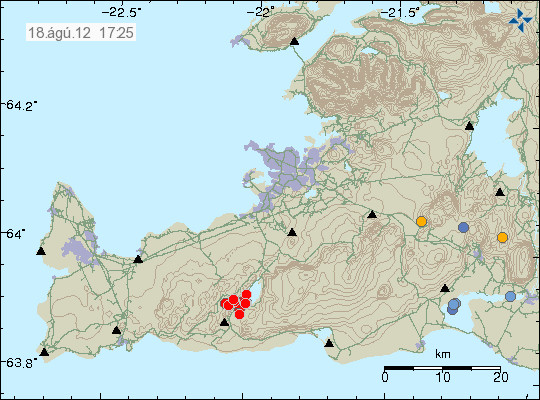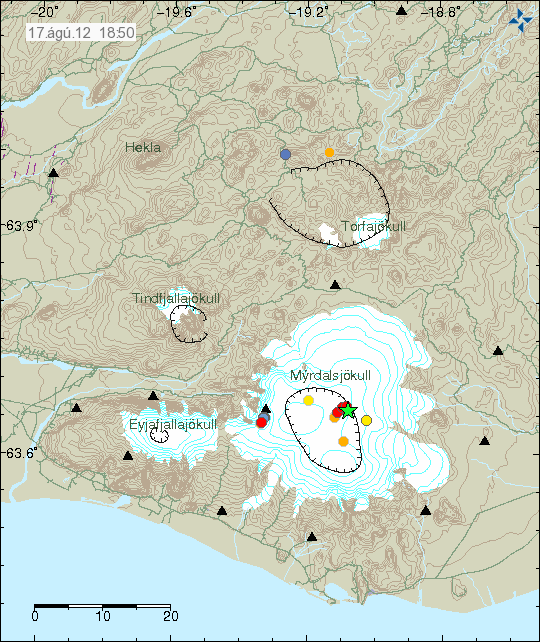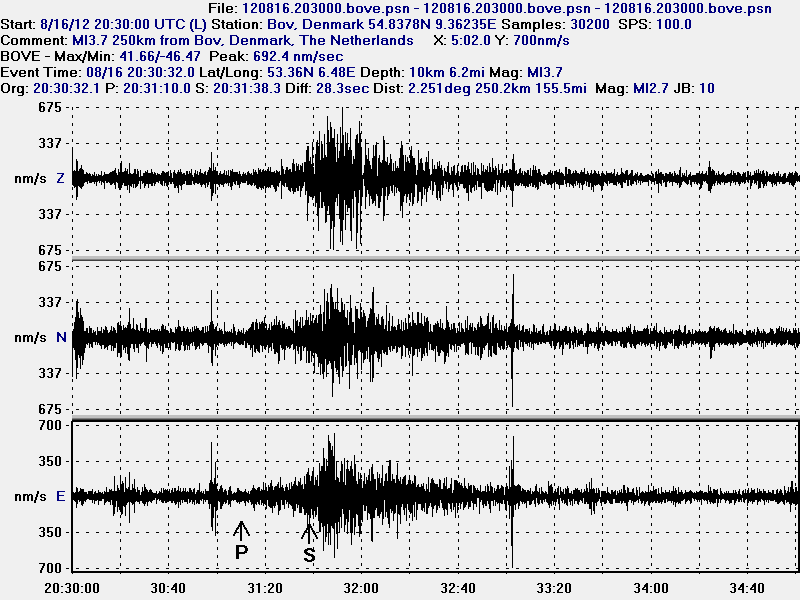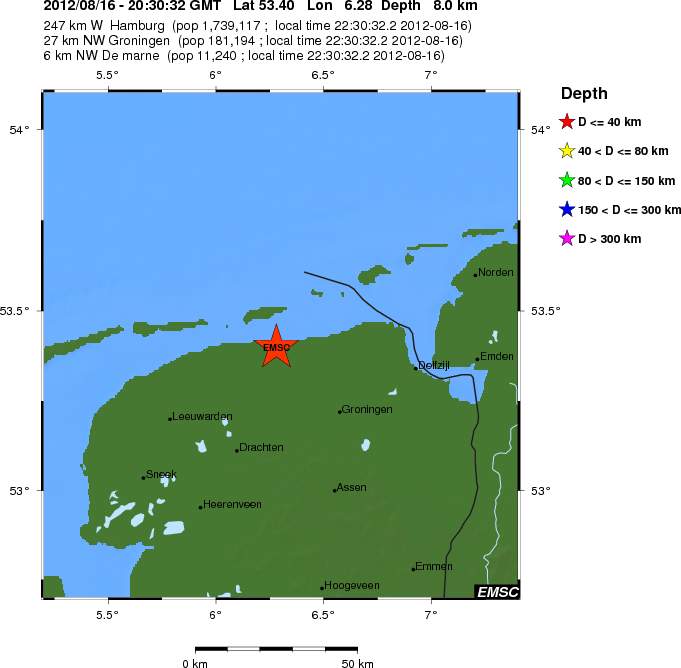Today (30.08.2012) Jan Mayen was hit by two earthquakes. The second earthquake was not an aftershock of the first one. But it remains an question if it was triggered by the first earthquake. The first earthquake had the magnitude of Mw6.6 according to EMSC web site. The second earthquake had the magnitude of Mb5.3 according to EMSC. Both earthquakes where felt by Norwegian military and science staff that resides on Jan Mayen.
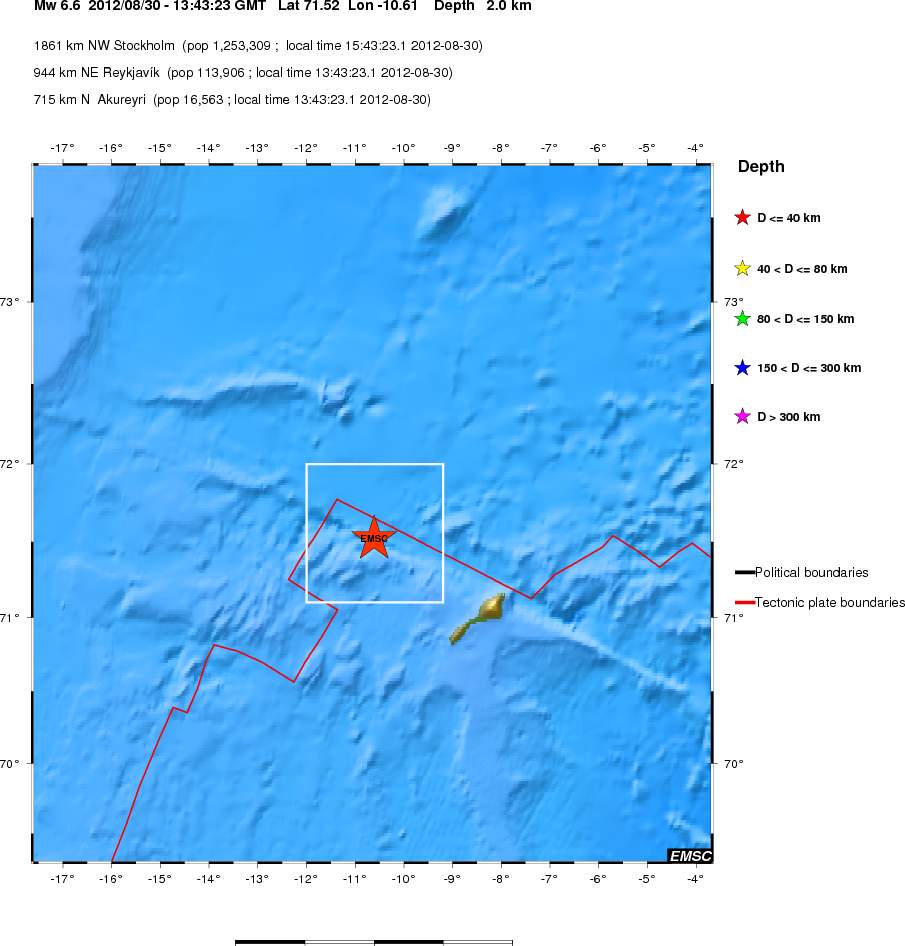
Location of the Mw6.6 earthquake off the coast of Jan Mayen. As can be seen. This earthquake took place far out in the ocean. Copyright of this image belongs to EMSC.
The second earthquake was less in magnitude. But was closer to the Jan Mayen Island. For that reason it was possibly felt better the first earthquake.
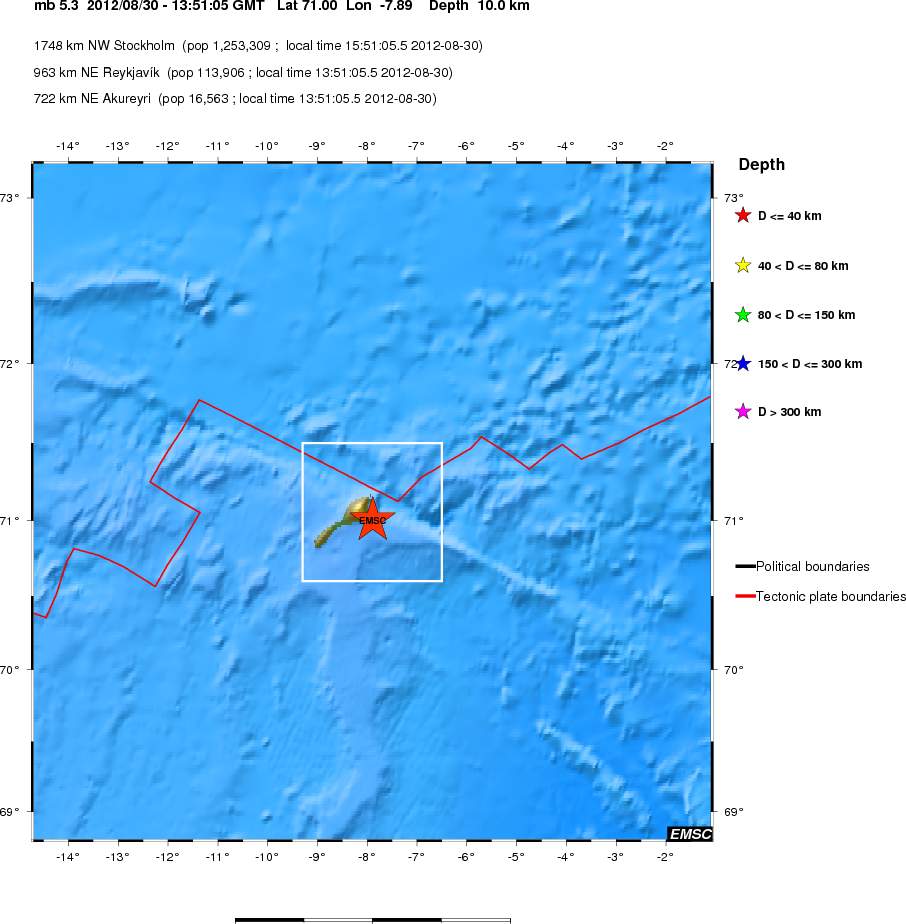
Large view of the second Jan Mayen earthquake. This earthquake had the magnitude of Mb5.3. Copyright of this image belongs to EMSC.
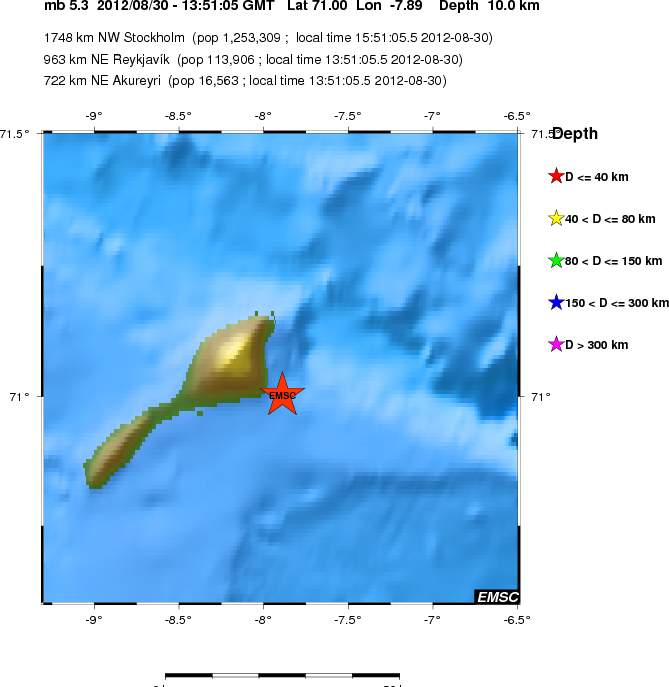
Close up view of the second Jan Mayen earthquake. Copyright of this image belongs to EMSC.
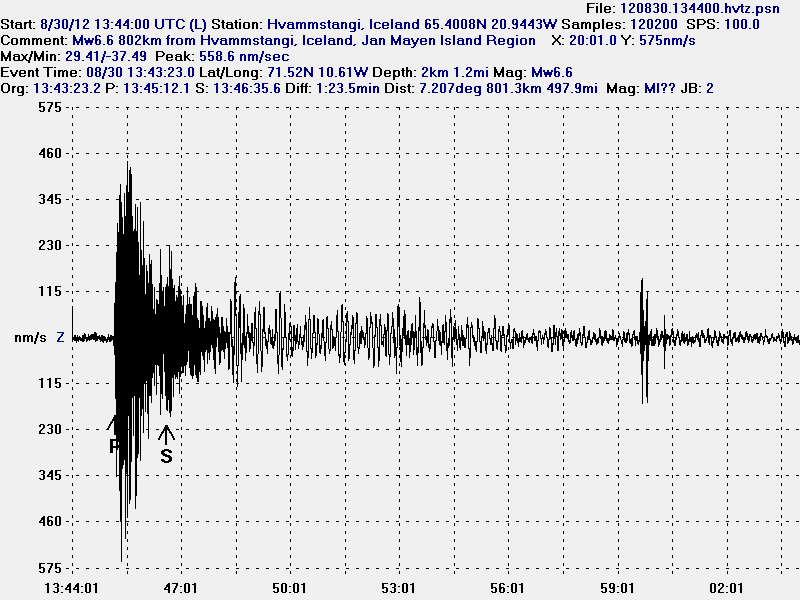
The Mw6.6 earthquake that took place in Jan Mayen. This geophone station is the closest to the earthquake in Jan Mayen. This image is released under CC licence. Please see CC licence page for more details.
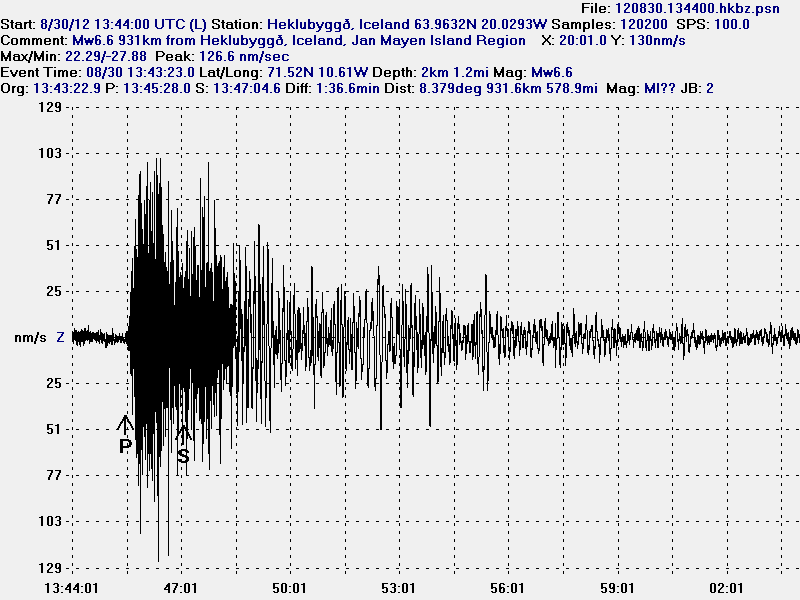
The Mw6.6 Jan Mayen earthquake as it was seen on Heklubyggð geophone station. This image is released under CC licence. Please see CC licence page for more details.
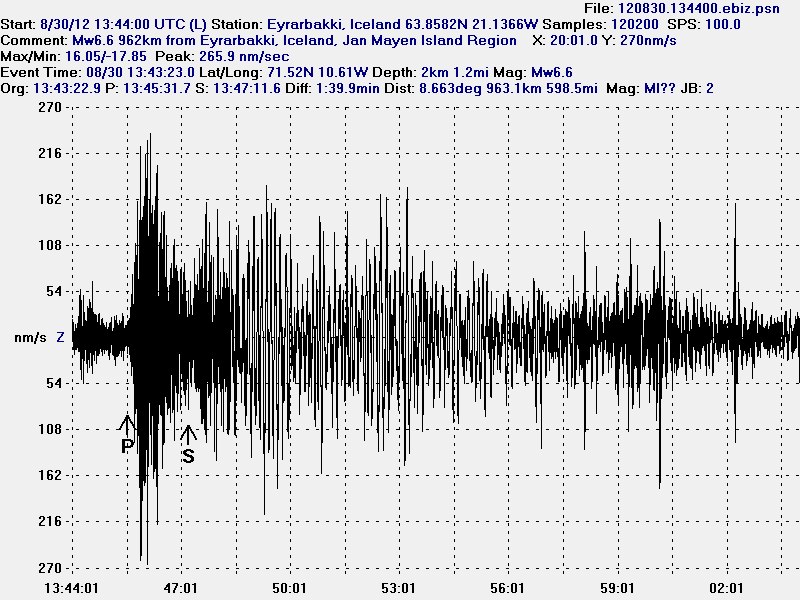
The Mw6.6 Jan Mayen earthquake as it was seen on Eyrarbakki geophone station. This image is released under CC licence. Please see CC licence page for more details.
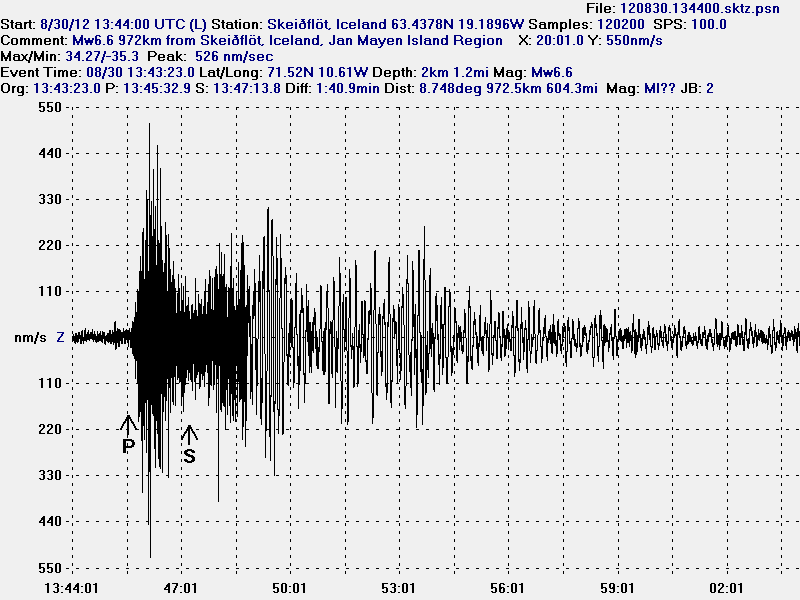
The Mw6.6 Jan Mayen earthquake as it was seen on Skeiðflöt geophone station. The P-wave goes trough something that speeds up it’s arrival. Something that the software that I use cannot account for. That is why the P-wave is in the wrong location. As model vs reality do not match in this case. This happen frequently with my location data. This image is released under CC licence. Please see CC licence page for more details.
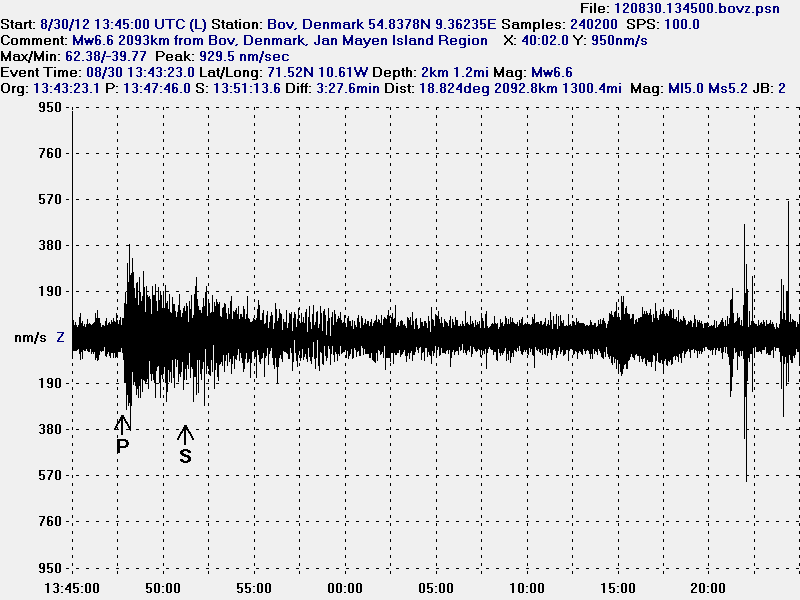
I did also record this earthquake in Denmark. Where I now live. This is the most distance that I did record this earthquake. But the distance was around 2000 km. The signal did appear. But I did not record any surface waves as I did in Iceland. Background noise is also higher here in Denmark then in most location in Iceland and it is more constant. This image is released under CC licence. Please see CC licence page for more details.
I did not record the Mb5.3 earthquakes on my geophones. It was just too small for my hardware to detect it. The waveform from the second earthquake was also lost in the surface waves from the first earthquake during this time period. At least when it comes to my hardware as it currently is.
Icelandic news about this earthquake
Jarðskjálfti við Jan Mayen – 6.6 stig (Vísir.is)
Almannavarnir: Ekki miklar líkur á flóðbylgju (Vísir.is)
Jarðskjálfti upp á 6,6 stig (mbl.is)
Norwegian and danish news about this earthquake
Kraftig jordskjelv utenfor Jan Mayen (NRK.no)
Skælv på 6,6 ryster Grønlands østkyst (DR.dk)










